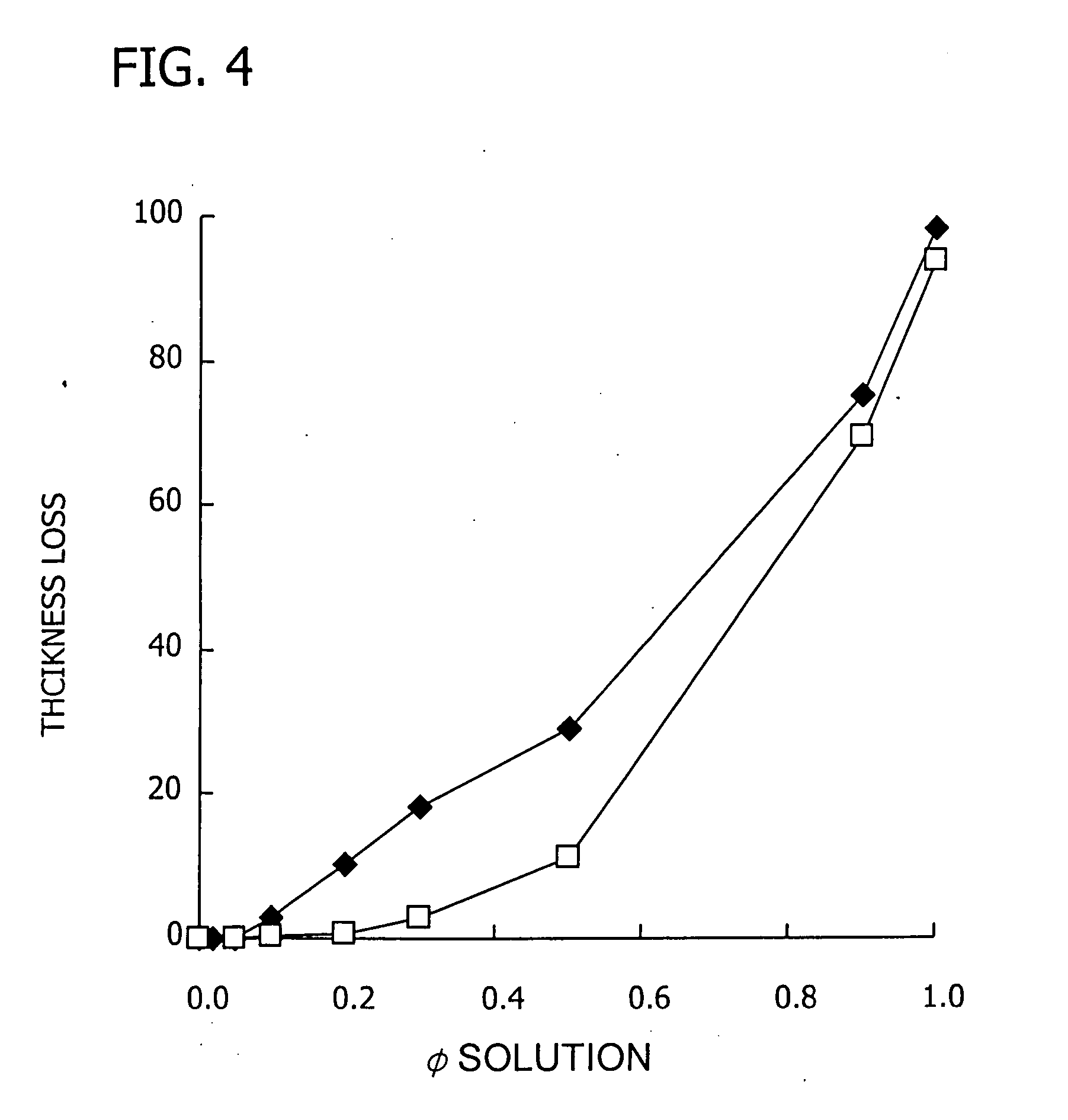Variable charge films for controlling microfluidic flow
a microfluidic flow and charge film technology, applied in the field of microfluidics, to achieve the effect of improving separation efficiency
- Summary
- Abstract
- Description
- Claims
- Application Information
AI Technical Summary
Benefits of technology
Problems solved by technology
Method used
Image
Examples
example 1
Quantitative and Qualitative Techniques for Use in Characterizing PEMUs
[0088] The following techniques were used to characterize the PEMUs of the present invention. Transmission IR spectra were recorded with a Nicolet Avatar 360 FTIR spectrometer. The thickness of the dried multilayers was measured with a Gaertner Scientific L116S ellipsometer, using 632.8 nm light at 70° incidence angle. A refractive index of 1.55 was employed for multilayers. Atomic force microcopy, AFM (Dimension 3100, Digital Instruments) in Tapping Mode™ was used to track the multilayer surface morphology change.
[0089] ATR measurements were performed with a Nicolet Nexus 470 fitted with a 0.5 mL capacity flow-through ATR assembly (Specac Benchmark) using a 70×10×6 mm 45° germanium crystal. Each spectrum had 32 scans coadded at a resolution of 4 cm−1. Multilayers were deposited on the ATR crystal while it was loaded in the flow cell by passing polyelectrolyte and rinse solutions, in an alternating manner, thro...
example 2
Characterizing a PEMU System Comprising a Blend of Copolymer and Homopolymer as the Polycation
[0090] A PEMU comprising a blend of two polyelectrolytes as the polycation was deposited on a silicon wafer and characterized. This blend was used as a coating on the interior surface of a capillary. See EXAMPLE 4. A random copolymer PDADMA-co-PAA (Calgon Merquat® 281, mol % of AA is 36%; MW˜200,000) was used as one polycation component. Homopolymer PDADMA (Aldrich, MW=300,000-400,000) was also used as a polycation component. Polystyrene sulfonic acid, PSS, (Scientific Polymer Products, molecular weight, MW˜70,000) was used as the polyanion.
[0091] Silicon wafers (Si, 0.5 mm thick, 1 in. diameter, undoped, double-side polished from Topsil Inc.) were cleaned in “piranha” solution (70% H2SO4 (conc.) / 30% H2O(aq)) and then in H2O2 / ammonia / water 1:1:7 vol / vol, rinsed in distilled water and dried with a stream of N2.
[0092] To prepare multilayers on these Si wafers they were affixed to a stainle...
example 3
Stability of PEMUs to pH Shock
[0097] A key variable in pH-sensitive coatings was the total thickness of the PEMU. While it is desirable to minimize the number of layers deposited, a minimum number of layers are also required to mask the bare silica in a capillary. Microscopic investigations (Atomic Force Microscope) of 21-layer PEMUs on Si wafer revealed some evidence of pH-induced cratering in the surface, as seen in the micrograph in FIG. 2. PEMUs made with 11 layers showed no such topological nonidealities, as shown in the micrograph in FIG. 3. This difference was attributed to the loss of material from the surface of 21-layer PEMUs. Loss of thickness from multilayers on silicon wafers is evidence for not only polymer charge extrusion but also charge expulsion.
[0098] Multilayers were more stable as the content of pH-ionizable material decreased, and less stable when the last layer was negative as-deposited (PSS). To assess the stability of various combinations of PEMU, they wer...
PUM
| Property | Measurement | Unit |
|---|---|---|
| Fraction | aaaaa | aaaaa |
| Fraction | aaaaa | aaaaa |
| Fraction | aaaaa | aaaaa |
Abstract
Description
Claims
Application Information
 Login to View More
Login to View More - R&D
- Intellectual Property
- Life Sciences
- Materials
- Tech Scout
- Unparalleled Data Quality
- Higher Quality Content
- 60% Fewer Hallucinations
Browse by: Latest US Patents, China's latest patents, Technical Efficacy Thesaurus, Application Domain, Technology Topic, Popular Technical Reports.
© 2025 PatSnap. All rights reserved.Legal|Privacy policy|Modern Slavery Act Transparency Statement|Sitemap|About US| Contact US: help@patsnap.com



